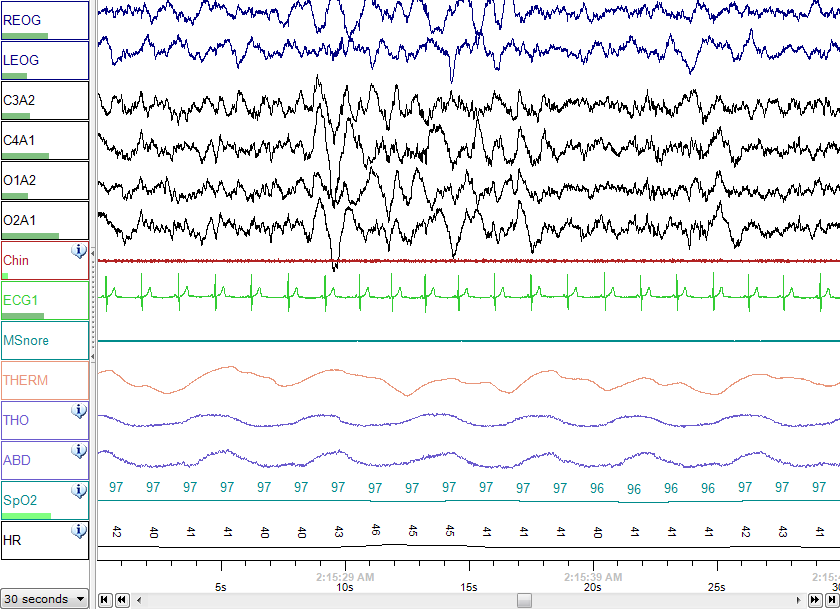
Two NIH funded studies totaling $575k to develop and test technologies for remotely monitoring the sleep and gait of individuals with Alzheimer's disease.
PROJECT 1 (AlzRadar): Automated, Assistive, Non-Contact Sleep Quality Monitor for Individuals with Alzheimer Disease
ALZRADAR PROJECT ABSTRACT
Proposed is an at-home sleep monitoring system specifically designed for caregivers of persons with Alzheimer’s disease (AD) to remotely monitor sleep disturbances and trends. Significance: As of 2017 approximately 5.5 million Americans live with AD and the number is expected to increase to 13.8 million by 2050, costing the US $1.1 trillion annually. Individuals with AD manifest many symptoms including cognitive decline, mood/behavioral changes and, of greatest relevance here, sleep disturbances. Studies indicate that approximately 1 in 3 patients with AD suffer from sleep and other nighttime disturbances such as insomnia and disruption of sleep, wandering, day/night confusion, repeatedly leaving bed, nightmares, and hallucinations. These disturbances often lead to reduced health and lower quality of life for persons with AD and additionally cause tremendous stress and sleeplessness for informal (unpaid) caregivers. Estimates suggest that there are more than 10 million adult caregivers of persons with AD or other dementias, providing an annual 18.2 billion hours of informal assistance, valued at $230.1 billion. Caregiving is taxing as evidenced by the fact that 59% of informal caregivers of people with AD or other dementias rated the emotional stress of caregiving as high to very high. The burden of caregiving is compounded by the fact that current methods of sleep quality assessment are either inaccurate, time consuming, or inappropriate for use with those who have AD. Hypothesis: We hypothesize that a system which allows for practical, long-term, remote monitoring of sleep quality metrics for patients with AD would improve their quality of life and reduce the burden of caregiving. Specific Aims: To prove the feasibility of the proposed system in Phase I IDL will 1) Determine stakeholder requirements through round table discussions; 2) Develop prototype hardware capable of measuring sleep quality; 3) Collect sensor and truth data from human subjects; 4) Develop and test signal processing algorithms for measures of sleep quality. The overall Phase I effort will demonstrate the ability of the proposed system to assess sleep quality and demonstrate feasibility of its use by caregivers of community-dwelling patients with AD.
PROJECT 2 (AlzInsole): A Gait and Path Tortuosity System for Monitoring Cognitive Decline from Daily Functions in Individuals with Alzheimer's Disease and/or Alzheimer's Disease Related Dementias (AD/ADRD)
ALZINSOLE PROJECT ABSTRACT
Proposed is a sensing system that unobtrusively measures and reports gait properties which are correlated to accepted measures of cognitive decline. Significance: It is estimated that as of 2018 over 5.7 million Americans are afflicted with AD. Due to the aging demographics, this number is projected to double by 2050 at an estimated annual direct cost of $1.1 trillion. Measures of cognitive decline can help to inform family members, caregivers, and health-care providers about the functional status and needs of independent-living older individuals. The need to improve the assessment of cognitive changes affecting daily functions has been identified by the NIH and National Academy of Medicine (NAM). Many ADLs such as shopping, housecleaning, and bathing are difficult to objectively measure. Measuring these ADLs is generally manually intensive often requiring direct supervision by a caregiver. The changing demographics of the elderly mean now more elderly adults will no longer have the frequent interaction with caregivers required to accurately make these measures. Hypothesis: A system capable of measuring and reporting gait parameters which are correlated to accepted measures of cognitive decline can decrease caregivers’ burden and increase quality of life for individuals with AD. Specific Aims: To prove the feasibility of the proposed system in Phase I IDL will 1) Generate user-centric requirements through focus group discussions; 2) Develop prototype system electronics and mechanical packaging; 3) Perform laboratory study of prototype functionality; and 4) Evaluate prototype performance through pilot human study. The overall Phase I effort will demonstrate the ability of the proposed system to accurately measure requisite gait measures and demonstrate the usability of the system by the target population.